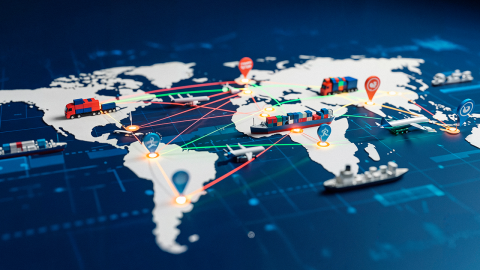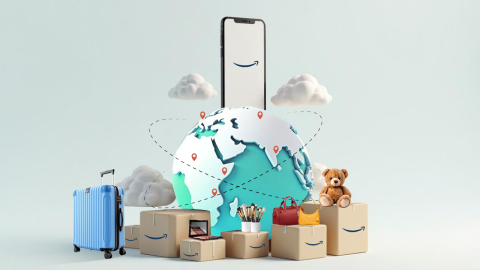
Amazon and the Directorate General of Foreign Trade (DGFT) have announced an extension of their collaboration, first formalised in November 2023, to accelerate ecommerce exports from India. Building on their initial Memorandum of Understanding, the renewed association covers specialised training sessions across 47 districts, integration of Amazon's Export Navigator tool within DGFT's Trade Connect portal, and the establishment of Expert Communities as local offline networks for MSMEs. The aim is to support the government's vision of enabling $200-300 billion in exports from India by 2030 and equip MSMEs across India with essential skills and resources to succeed in ecommerce exports. The MoU was renewed today in the presence of Santosh Sarangi, Additional Secretary and Director General of DGFT, Chetan Krishnaswamy, Vice President, Public Policy – Amazon, and Bhupen Wakankar, Director Global Trade – Amazon India.
Santosh Sarangi says, "Our continued collaboration with Amazon is a significant step in realising the vision of making each district an export hub. Building on our initial success, we are expanding our focus to 47 districts to support more MSMEs to access global markets. This partnership has already benefited over 3,000 MSMEs, and we are excited to see its growth. This aligns perfectly with our goal of enabling $200-300 billion in exports from India by 2030, showcasing the best of 'Make in India' to the world."

What the collaboration means for MSMEs
The collaboration will leverage diverse event formats to provide MSMEs guidance on expanding product selection and scaling export operations. By combining Amazon's global reach and expertise in ecommerce exports with DGFT's local expertise, this initiative aims to unlock new opportunities for Indian sellers in international markets.
In the first year of their association, DGFT and Amazon had organised a series of ecommerce exports promotion events across 20 districts in India. These events saw Amazon representatives providing guidance to over 3,000 MSMEs about ecommerce exports and the process of selling on Amazon global marketplaces. Participants received on-spot assistance and real-time query resolution. Following these events, Amazon offered support to interested sellers, assisting them with the onboarding process and connecting them with trusted third-party service providers to help obtain necessary documents, meet compliance requirements, and get listing and advertising support.
Bhupen Wakankar says, "We are excited to extend our collaboration with the DGFT to support MSMEs and entrepreneurs across India to create robust global businesses and contribute to India’s overall exports. Our association since 2023 has shown promising results and we are looking forward to expanding our combined focus to 47 districts this year. Amazon’s focus remains on making exports simpler and more accessible to businesses of all sizes as we work toward our goal of enabling $80 billion in cumulative ecommerce exports from India by 2030.”
What are Export Communities?
Export Communities will function as accessible, local offline networks designed for MSMEs who are either currently engaged in e-commerce exports or planning to venture into it. The communities will serve a dual purpose: assist prospective exporters in initiating their e-commerce export journey while simultaneously helping existing sellers scale their export operations through comprehensive support including guidance, training, mentorship, and hands-on assistance. These will be developed under DGFT’s leadership, and each Export Community will have participation from multiple stakeholders including government agencies, third party service providers, manufacturers, existing and prospective e-commerce exporters, export bodies, and Amazon Global Selling.
More about Export Navigator
Recently, Amazon launched Export Navigator – a one-stop dashboard designed to help exporters understand, manage, and comply with regulatory requirements at both origin (India) and destination markets. It is part of Amazon’s efforts to simplify exports for small businesses and startups across India by addressing key pain points like cross-border compliance, logistics, and payments, among others. The dashboard is available to all Indian exporters irrespective of whether they are registered on Amazon or not. Amazon Export Navigator is currently live for exporters looking to ship products to the US and will soon be enabled for other global markets.
What is the Districts as Export Hubs initiative
The Districts as Export Hubs initiative constitutes a separate chapter in India’s Foreign Trade Policy and underscores the importance of harnessing the unique potential and diverse identity of each district, transforming them into export hubs. The Department of Commerce, through the DGFT collaborates directly with States/UTs and districts to establish institutional mechanisms for facilitating exports of identified products/services. This initiative focuses on boosting manufacturing and exports in urban areas while stimulating economic activity in rural districts. It establishes connections between local producers and global supply chains, addressing various facets of production.














